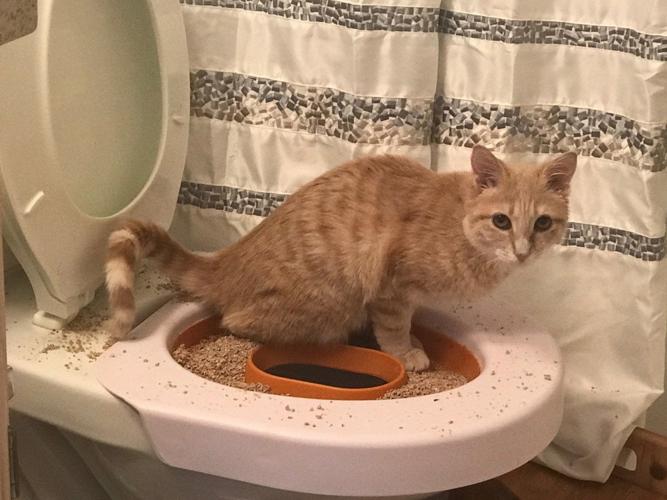Why Flushing Cat Poop Down Your Toilet Isn't a Good Idea - Tips for Proper Handling
Why Flushing Cat Poop Down Your Toilet Isn't a Good Idea - Tips for Proper Handling
Blog Article
Everybody may have their unique piece of advice involving Don’t flush cat feces down the toilet.

Intro
As pet cat owners, it's necessary to be mindful of exactly how we take care of our feline friends' waste. While it may seem practical to flush feline poop down the bathroom, this technique can have detrimental effects for both the environment and human health.
Environmental Impact
Flushing pet cat poop introduces unsafe pathogens and bloodsuckers right into the water, posing a considerable threat to marine ecosystems. These impurities can adversely affect aquatic life and concession water high quality.
Health and wellness Risks
In addition to environmental worries, flushing cat waste can also pose wellness threats to people. Feline feces may consist of Toxoplasma gondii, a bloodsucker that can trigger toxoplasmosis-- a potentially severe illness, particularly for pregnant females and people with damaged immune systems.
Alternatives to Flushing
Thankfully, there are safer and more liable means to take care of pet cat poop. Think about the following choices:
1. Scoop and Dispose in Trash
One of the most typical method of disposing of pet cat poop is to scoop it into a biodegradable bag and toss it in the garbage. Make sure to use a committed trash scoop and dispose of the waste without delay.
2. Usage Biodegradable Litter
Select biodegradable pet cat litter made from products such as corn or wheat. These trashes are environmentally friendly and can be safely dealt with in the garbage.
3. Bury in the Yard
If you have a backyard, think about hiding pet cat waste in an assigned area far from vegetable yards and water sources. Make sure to dig deep enough to avoid contamination of groundwater.
4. Install a Pet Waste Disposal System
Buy an animal garbage disposal system particularly created for cat waste. These systems utilize enzymes to break down the waste, reducing smell and environmental effect.
Verdict
Accountable pet dog ownership expands beyond supplying food and shelter-- it likewise entails proper waste monitoring. By refraining from flushing pet cat poop down the toilet and selecting different disposal methods, we can lessen our ecological footprint and secure human health.
Why Can’t I Flush Cat Poop?
It Spreads a Parasite
Cats are frequently infected with a parasite called toxoplasma gondii. The parasite causes an infection called toxoplasmosis. It is usually harmless to cats. The parasite only uses cat poop as a host for its eggs. Otherwise, the cat’s immune system usually keeps the infection at low enough levels to maintain its own health. But it does not stop the develop of eggs. These eggs are tiny and surprisingly tough. They may survive for a year before they begin to grow. But that’s the problem.
Our wastewater system is not designed to deal with toxoplasmosis eggs. Instead, most eggs will flush from your toilet into sewers and wastewater management plants. After the sewage is treated for many other harmful things in it, it is typically released into local rivers, lakes, or oceans. Here, the toxoplasmosis eggs can find new hosts, including starfish, crabs, otters, and many other wildlife. For many, this is a significant risk to their health. Toxoplasmosis can also end up infecting water sources that are important for agriculture, which means our deer, pigs, and sheep can get infected too.
Is There Risk to Humans?
There can be a risk to human life from flushing cat poop down the toilet. If you do so, the parasites from your cat’s poop can end up in shellfish, game animals, or livestock. If this meat is then served raw or undercooked, the people who eat it can get sick.
In fact, according to the CDC, 40 million people in the United States are infected with toxoplasma gondii. They get it from exposure to infected seafood, or from some kind of cat poop contamination, like drinking from a stream that is contaminated or touching anything that has come into contact with cat poop. That includes just cleaning a cat litter box.
Most people who get infected with these parasites will not develop any symptoms. However, for pregnant women or for those with compromised immune systems, the parasite can cause severe health problems.
How to Handle Cat Poop
The best way to handle cat poop is actually to clean the box more often. The eggs that the parasite sheds will not become active until one to five days after the cat poops. That means that if you clean daily, you’re much less likely to come into direct contact with infectious eggs.
That said, always dispose of cat poop in the garbage and not down the toilet. Wash your hands before and after you clean the litter box, and bring the bag of poop right outside to your garbage bins.
https://trenchlesssolutionsusa.com/why-cant-i-flush-cat-poop/

We hope you liked our part on Don’t flush cat feces down the toilet. Thanks for spending some time to read our posting. Enjoyed our blog posting? Please share it. Let others locate it. We love reading our article about Can You Flush Cat Poop Down The Toilet?.
Maintenance Sign-Up Report this page